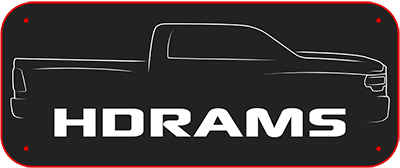Nope, didn't miss your point at all. You just misunderstood what I wrote. I clearly wrote that the cost burden of
that feature - of the
additional data on clearances and other truck route related data such as explosives and hazardous materials, which is maintained and updated by staff somewhere, including the cost of the
extra code to pull/interpret/display/route for that data - is all paid for by the customers that use it, essentially. It's not a huge cost, and I'm not implying that it is. I
did not imply that the base software costs are paid for entirely by one subset of customers. And Garmin does charge extra for the trucking routing option. They're making a profit at it, recovering well more than the "cost burden" of all that feature's data requirements. I'd bet money that they have a team that focuses on that option/product, the code addition to the larger base product, and the data acquisition and maintenance.
As far as the elimination of consumer car parts effect, I think you also need to consider history. The average prices of in-vehicle navigation systems have historically been very high. They used to range from $1,500 up, to as much as $3,000. Average price today is still hovering somewhere around $800. And many come with subscription services ranging over $30/month. The effect of large OEM supply contracts led the prices to drop, but industry analysts also blame that somewhat on smartphones. To quote one Ford exec, the in-vehicle navigation system with its high pricing is "an unsustainable model."
At the same time, the portable GPS units sold by Garmin and others are normally less than half the cost of current built-in systems.
Actually, it is true. Most people I know won't buy a GPS or in-vehicle nav because they have a cell phone with one in it, and bundled maps they consider "free." I only know one person that even thinks of using a tool like Waze for most driving (to get extra data in the mapping system). The personal GPS is portable, the car GPS can be as expensive as a second smartphone, and they have no need for two. They run with the one they find more useful, the pocket device which messages/calls all their friends, etc. And they don't want to pay more for a car GPS than they do for a new
50" TV or other things they'd much rather own if they have the money.
Also, there's the familiarity issue. People use their phones all throughout the day, but not so much their cars. Switching back and forth can be frustrating. In fact, a
study done by JD Power a few years back found that 1/3 of the people stopped using their in-car navigation systems about 2 weeks after getting them. Too hard to get destinations loaded, for example. And they switched to their phones. And they're not going to buy the option again next time unless they have no choice.
Now some in-car systems are starting to include voice recognition, but the availability of Android Auto and Apple CarPlay have thrown the proverbial monkey wrench into the works, too.
About 1.8 million in-vehicle navs were sold in new vehicles a decade ago. 2015: an estimated 4 million, out of nearly 17 million passenger vehicles sold. The following year, JD Power did that study and found that 1/3 of the nav units were likely not being used. Jump to 2020. Lots of vehicles show up with nav preinstalled on the lots. Doesn't mean people want it, or that they want to pay for it. But they end up compromising in some fashion perhaps and buying it. My sister, my brother in law, both of my kids, and my wife each bought new vehicles off the lot in the last 3 years with nav pre-installed and have never used it. None of them wanted to pay for it. Each compromised on it because they wanted the rest of the car or truck. If it had been a dealer-added option awaiting their approval, not one nav would have been purchased. A fellow truck owner friend told me not long ago of his new truck: "It's even got nav. Don't expect I'll learn how to use it. My phone works fine if I get someplace I don't know."
Tell that to Amazon and Rand McNally. They're selling them now. In fact, in this article, Rand McNally announced that even though print maps seem like a dinosaur, they're still "
a highly profitable business for the company. It’s a cash cow." While they're not as popular as they used to be, they aren't gone yet. And unlike your phone book, which was delivered to you even though you didn't ask for it - truckers buy these books, why would they recycle them immediately? They won't. They'll get rid of them when they feel they no longer need them.
As I said in my first comment, the paper copies will go away first. A lot of folks like you and I don't want or need them. But not everyone feels that way. Yet.
Yeah, the issue is filtering out the useless crowd-sourced data. What good is a pothole notice 5 miles after the pothole? A speed trap notice 15 minutes later? That sort of stuff is some of the hardest to deal with, and the software systems to analyze and filter it can be complex.


